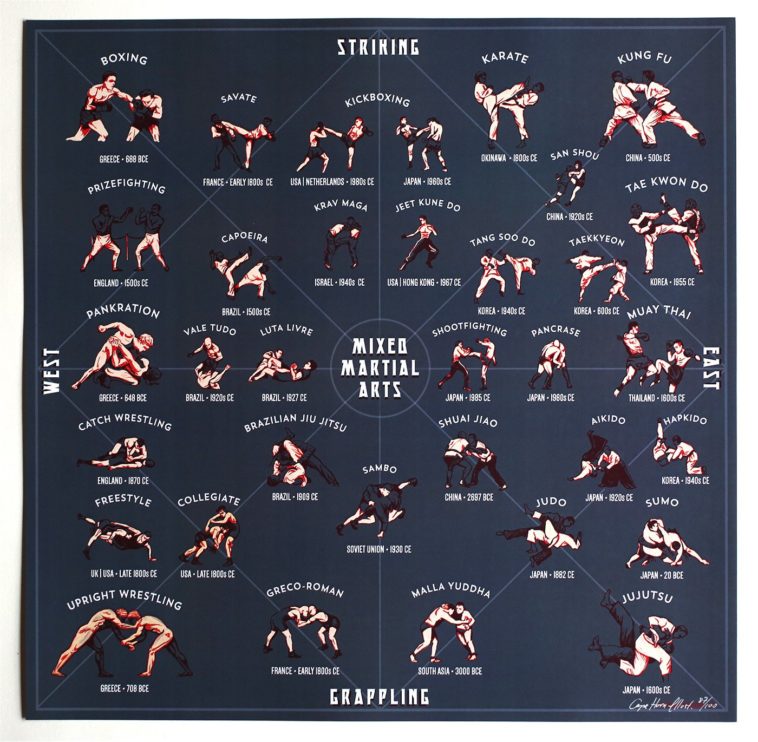The Growth And Progression Of Martial Arts: Tracing Its Roots From Ancient Times To Contemporary Practices
The Growth And Progression Of Martial Arts: Tracing Its Roots From Ancient Times To Contemporary Practices
Blog Article
Short Article Author-Borup Sun
Step into the globe of martial arts, where old beginnings and modern techniques clash in an exciting trip of self-control and self-discovery.
As you delve into the background and evolution of this captivating art form, prepare to be captivated by the social impacts, technical improvements, and profound ideology that have formed it over centuries.
From the combat zones of old people to the training grounds these days, martial arts have stood the test of time, constantly adjusting and expanding.
Each strike, each movement, brings with it the weight of plenty of years of tradition and wisdom, passed down via generations. This is a tale of strength, of warriors that sought not just physical prowess, but additionally self-confidence and consistency.
Join us on this amazing expedition as we uncover the tricks, the tales, and the transformational power of martial arts.
Prepare yourself to be influenced, tested, and permanently transformed by the background and evolution of martial arts.
Social Influences on Martial Arts
As you check out the background and evolution of martial arts, you'll quickly find the interesting methods which cultural impacts have formed these battle methods.
From the old worlds of China and India to the extra current growths in Japan and Brazil, martial arts have actually been heavily affected by the cultures in which they stemmed.
As an example, Chinese martial arts, such as Kung Fu and Tai Chi, are deeply rooted in the ideology of Taoism and the idea of Yin and Yang.
On the other hand, Japanese martial arts, like Karate and Judo, show the samurai warrior practices and the worths of self-control and honor.
Likewise, Brazilian martial art, Capoeira, combines components of African dancing and music, reflecting the cultural heritage of African slaves in Brazil.
These cultural influences not just offer each martial art its unique characteristics however likewise supply a deeper understanding of the historic and social contexts in which they developed.
Technical Advancements and Martial Arts
With the surge of advanced weaponry and innovative training devices, you've had the ability to boost your abilities and adjust to the ever-changing fight landscape.
Technical advancements have actually revolutionized the way martial arts are practiced and educated. visit this hyperlink enable you to learn sensible combat scenarios without the danger of physical harm. High-speed cams record every move, allowing you to examine and best your strategies. visit this backlink check your heart rate, breathing, and muscular tissue activation, providing instantaneous responses on your efficiency.
Furthermore, the advancement of specialized devices, such as resistance bands and dexterity ladders, has enabled you to boost your speed, strength, and agility. These technical improvements have not only made training extra reliable yet have likewise pushed the boundaries of what is possible in martial arts, enabling you to get to brand-new elevations in your method.
The Ideology and Principles of Martial Arts
The ideology and principles of martial arts are deeply rooted in shaping your state of mind and instilling discipline, focus, and regard in your practice.
1. Mindset: Martial Arts educates you to establish a solid and resistant attitude. It allows you to get over obstacles both on and off the mat, pressing your limitations and standing firm in the face of misfortune.
2. Self-control: Martial Arts needs discipline and self-constraint. Via normal training and adherence to rigorous guidelines and techniques, you discover to control your impulses and establish a strong job principles.
3. Emphasis: Martial Arts calls for intense focus and concentration. By educating your mind to be existing in the moment, you boost your ability to respond rapidly and successfully throughout battle circumstances.
4. Respect: Martial Arts highlights regard for oneself, instructors, educating partners, and opponents. It teaches you to value the abilities and experiences of others, cultivating a sense of sociability and sportsmanship.
Conclusion
Congratulations on finishing your journey with the captivating world of martial arts! Throughout this expedition, you have actually witnessed the rich history and amazing development of these fight practices.
From their old beginnings to the contemporary methods we see today, martial arts have been formed by social influences.
The integration of innovation has also played a considerable function in changing the method martial arts are instructed and exercised in the present day.
Nonetheless, it is important to keep in mind that martial arts are greater than just physical combat. They incorporate profound approaches and directing concepts that go beyond the mere act of battling.
Take a minute to assess this anachronistic experience and appreciate just how the tradition of martial arts remains to thrive in today, transcending time and borders.
